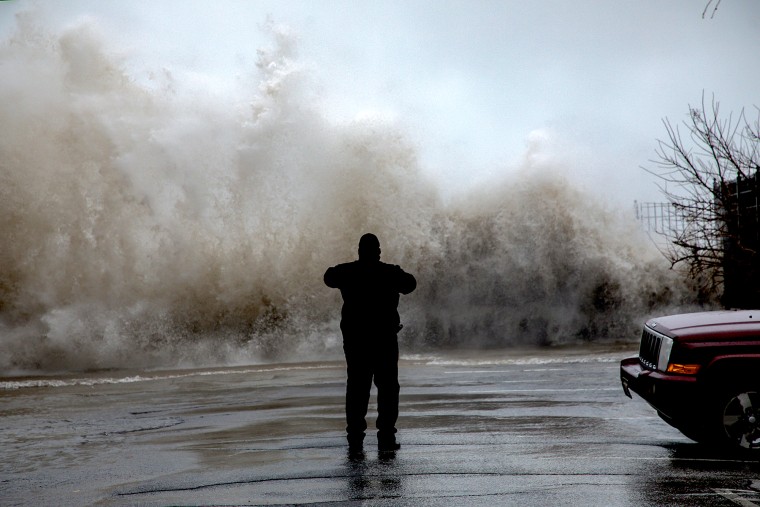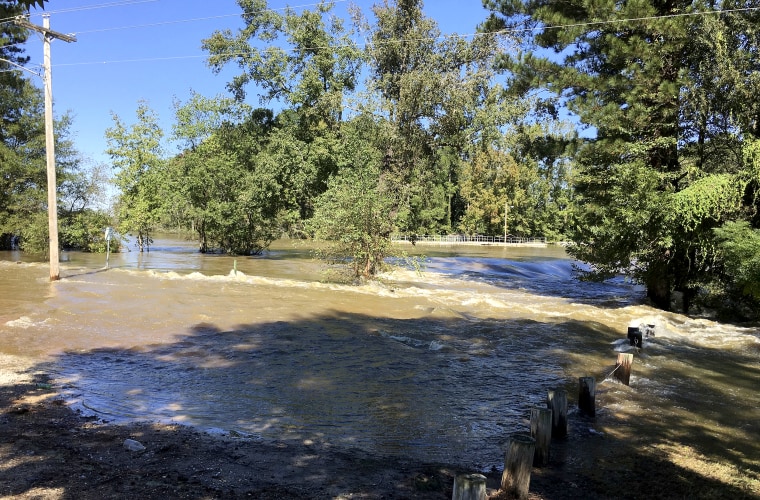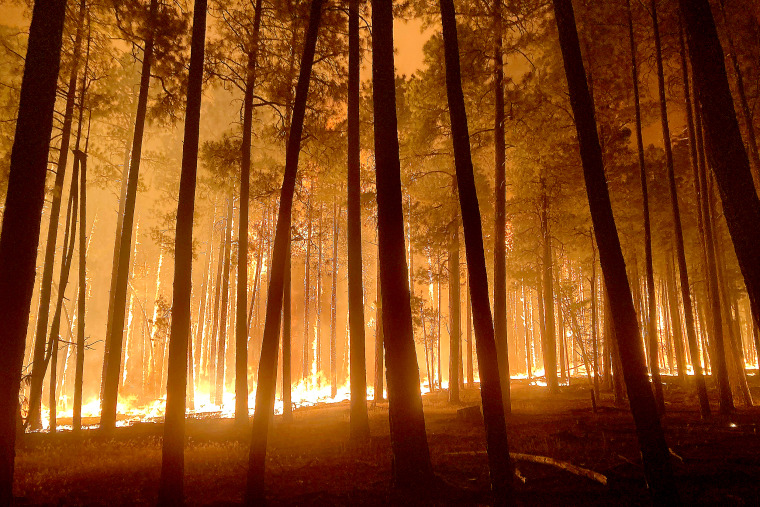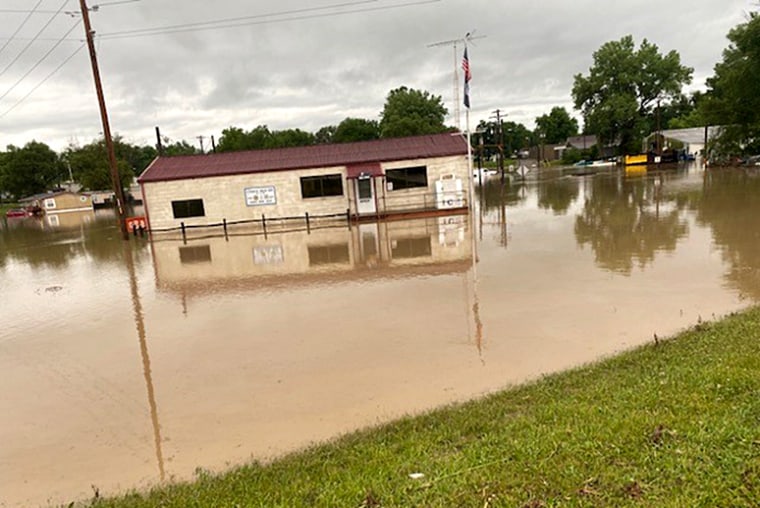Three of the wealthiest states — California, New Jersey and Washington — are on track to receive more than half of the money, for initiatives including flood mitigation, a tsunami shelter and the removal of dense undergrowth to prevent wildfires. Plenty of poorer communities will receive funding as well, but dozens will not, including Amazonia, Missouri, with a population of just over 300, which wanted to protect critical equipment for its sewer system from rising waters, and Wilson, North Carolina, which hoped to move public housing away from areas at risk of flooding.
The long list of more than 500 communities that received no funding — many without the resources to prepare for extreme weather on their own — has raised concerns among environmental justice and civil rights advocates that better resourced communities won big, while disadvantaged areas remain in need. In some cases, that’s because poorer communities don’t have the money for the matching part of the grant, or lack the resources to prepare a competitive grant application.
The consequences of climate change are particularly pernicious for the poor and communities of color. Black, Latino and low-income families are more likely to live in flood zones, researchers have found. The nation’s wealth gap means their neighborhoods are less likely to have money to harden infrastructure and homes in advance of natural disasters, and the recovery is unequal as well. An investigation of FEMA’s data by NPR shows that affluent survivors are more likely to receive help.
As disappointed officials learn why their projects were turned down, some advocates are questioning whether the agency ’s long-criticized disparities in disaster assistance are at risk of being repeated in a program meant to buttress communities before disasters happen.
Jacqueline Patterson, the recently retired director of the NAACP’s Environmental and Climate Justice Program, said FEMA needs to be aggressive about reaching towns and cities that are particularly vulnerable.
“Communities don’t have the luxury of time for trial and error when we’re talking about lives that are being lost as we speak,” she said.
David Maurstad, FEMA’s deputy associate administrator for federal insurance and mitigation, said in a statement that the agency “is committed to delivering our programs with equity.” FEMA “will be persistent in our efforts to refine and improve the program through the lessons we learn and the feedback we receive from our stakeholders.”
FEMA is planning a new round of $1 billion in funding for the nascent program, though the agency has not yet set a timeline for opening applications. In response to NBC News’ questions, FEMA said that it would work with up to 10 communities to help them prepare their applications for that funding.
One obstacle that poorer communities face is that the new grant program does not cover the full cost of projects, requiring state or local governments to provide a 25 percent match. For economically disadvantaged areas with a population of 3,000 or less, the state or local share can drop to 10 percent. But that 10 percent can still be too high for some communities, shutting them out from applying.
Malary White, a spokeswoman for the Mississippi Emergency Management Agency, said in a statement that some cities and counties in the nation’s poorest state “simply can’t afford that cost share, therefore mitigation dollars go unused.”
Amelia Muccio with Hagerty Consulting, an emergency management firm that advised California and other communities on FEMA’s grant requests, said smaller locales may also lack the resources to go through the cumbersome process of applying for the grant. Among many other requirements, communities had to show that the project ultimately cost less than the consequences of not taking action.
“That kind of becomes a barrier,” Muccio said of the complex application process. “I’d argue that a lot of these communities don’t have a seat at the table.”
Another setback for some communities was out-of-date construction and building codes. FEMA incentivizes state and local governments to adopt either the 2015 or 2018 versions of the International Building Code and International Residential Code, which set requirements for construction, such as requiring sprinkler systems in new homes, and are meant to provide a baseline of safety for buildings. In judging grant applications, FEMA awarded up to a fifth of the total available points to applicants in areas with the codes in place.
The result was that all of the funds that FEMA expects to allocate through the competition — about two-thirds of the $500 million — are expected to go to applicants in states requiring adherence to these codes. This left out states that have not adopted them or have not required local jurisdictions to adhere; those states will receive just the $600,000 baseline grant, plus in some cases grants dedicated to Native American tribes. (In some states, updating building codes can become a contentious process opposed by real estate industry lobbyists who worry about additional costs for builders.)
As hurricane and wildfire season sets in, many of the communities who lost out in FEMA’s initial round are regrouping and deciding whether to reapply in the future or seek another source of funds.
In Wilson, North Carolina, where 51 percent of residents are Black or Latino, and the poverty rate is almost double the nation’s average, officials recently learned that their project was not picked. The local housing authority had hoped for $8.8 million to rebuild public housing in the city farther away from a flood-prone creek. The vacated homes would be torn down, so that the once-residential area could serve as a green space to help soak up water and reduce risks.
Tim Rogers, a spokesman for the housing authority, said several tenants had already been forced to relocate after their apartments flooded during Hurricane Matthew in 2016.

Heavy rain from Hurricane Matthew resulted in flooding throughout Wilson, N.C., in October 2016. Martha Waggoner / AP file
“Floods are getting worse,” Rogers said. “That’s one of the things we’re trying to prepare for.”
In Coconino County, Arizona, which faces the combined threat of wildfires and flooding and where 16 percent of residents live in poverty, officials had asked for almost $188,000 for fire prevention efforts, including removing trees and brush.
Lucinda Andreani, the county’s deputy manager, said residents who want to protect their homes generally have to spend thousands of dollars hiring specialists to cut down trees vulnerable to embers. Income is often a deciding factor between residents who can afford the mitigation efforts and residents who cannot.

The Rafael Fire, pictured June 22, was discovered June 18 in Prescott National Forest in Arizona.Nick Desoto / U.S. Forest Service
Andreani said the county is checking to see if Covid relief funds can be used for fire prevention, as the state’s congressional delegation continues to lobby for increased federal aid to fight wildfires.
In Amazonia, Missouri, Mayor Rick Russell learned that the small town’s request to FEMA to help address flood threats was denied just weeks after a deluge of rain on June 24 led to emergency boat evacuations.
“We were really hoping for this grant, especially after this flood,” he said.
Russell is waiting to see if his town will receive federal disaster assistance for damage to infrastructure, including roads. The area was one of at least 21 counties in Missouri hit hard by storms and flooding last month.

More than a dozen inches of rain fell, culminating in flash flooding and emergency evacuations by boat, in Amazonia, Mo., on June 24.Mayor Rick Russell
If the disaster funds come through, that could provide some relief — but Russell is still grappling with how to address the needs that led him to apply for FEMA’s Building Resilient Infrastructure and Communities grant program in the first place.
During last month’s flood, Amazonia received more than 12 inches of rain in a day, covering the town’s generator with almost 2 feet of water, making it inoperable.
When the power goes out, the generator works as the town’s backstop, allowing its sewer system to continue pumping out water. After the storm, those pumps were down for two days until electricity was restored.
Part of the funds Russell requested from FEMA would have been used to move the generator 4 feet higher, out of the likely path of floodwaters.
As a last resort, the town’s council has given permission to tap into its roughly $150,000 reserve funds to elevate the generator. But that would reduce the reserve account’s balance by $45,000, a prospect the mayor prefers to avoid. The local water tower could need repairs in the coming years, he said.
Many residents in the town are elderly and on a fixed income. Federal grants are critical to addressing the town’s infrastructure needs, as the mayor knows disasters can occur regardless of the town’s thin budget.
“We try to keep our nose above water,” Russell said. “We have a low tax base.”







